Do PRP Injections Work? My Experience with a Torn Plantar Fascia
If you follow me on Instagram, then you likely know that I have spent half of 2021 battling a plantar fascia tear. I’m happy to report that thanks to PRP injections, my torn plantar fascia is HEALED.
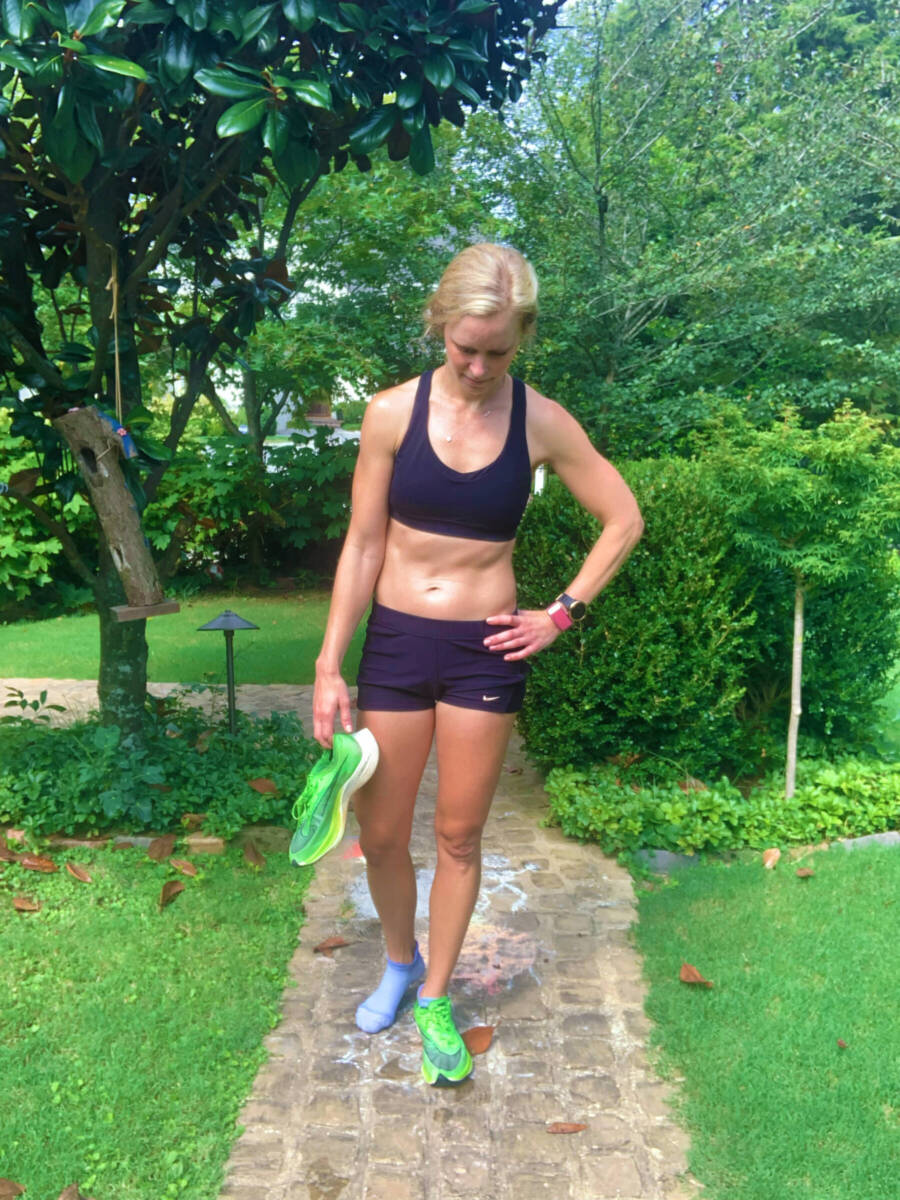
I have gotten a lot of questions over Instagram and Facebook about my injury and how I healed it, so I figured it was time to share my experience with PRP injections on the world wide web. Frankly, there isn’t a lot of information from real people on the relatively novel treatment so I want to fill the void and give hope to the hopeless. To be honest, this injury was incredibly painful and I never thought I would get better!!
(Buckle up: this is a LONG one that I hope is helpful to anyone battling this persistent running injury!).
Table of contents
- How I got my plantar fascia injury
- How I mistook a plantar fascial tear for plantar fasciitis
- How I was diagnosed with a plantar fascia tear along with plantar fasciitis
- How I decided to get PRP injections for plantar fasciitis and my plantar fascial tear
- My plantar fascia tear treatment plan:
- 5 Lessons from my Plantar Fascia Injury
How I got my plantar fascia injury
A quick recap: In August of 2019, I partially tore my hamstring on a marathon build-up with hopes of qualifying for the Olympic Trials marathon. I still ran the marathon in 2019, tried to continue to train after, and finally called it quits on February 1 of 2020 spending the rest of the year rehabbing the hamstring tear and resulting in high hamstring tendinosis.
I finally resumed training in January of 2021. I had a successful build-up but did have some nagging heel pain that seemed to come and go.
In April, three days before I was set to run my first race, I got my second COVID-19 vaccine. Twelve hours later I was in the ER and diagnosed with pleurisy. I took 6 weeks off running to let my lung inflammation go down. (It is possible but not confirmed this was an adverse vaccine reaction).
I remember taking steroids hoping a fringe benefit would be to resolve my heel pain.
When I resumed running, I focused on very easy running, getting a chest strap heart rate monitor to ensure I kept my heart rate low.
The heel pain persisted.
On July 4 while on a beach vacation, I set out for a 16 to 18 mile long run with hopes that it would loosen up. I promised myself that I would not alter my form to protect my heel. Still, I ignored cues that I needed to stop and ran 14 miles before I could not run any further.
Cutting a run short was a first for me.
How I mistook a plantar fascial tear for plantar fasciitis
I felt sure I had plantar fasciitis and made an appointment with my physical therapist as soon as I got back from the beach. I had all the signs. It was in the right spot. I could not stand in the morning, etc.
My PT diagnosed me with plantar fasciitis and Achilles tendonitis and we treated it as such. I did lots of calf stretching and rolling. I did toe yoga and foot strengthening. I bought a MOBO board. She scrapped my foot and performed other manual therapies. I slept with a night splint. I bought a bunch of shoe inserts and running shoes.
I completely stopped running and biked instead. I didn’t lift heavy weights because heavy loads aggravated it. I wore Oofos or running shoes all the time (even to a wedding). I massaged, scrapped, and cupped it. I iced and heated all day long. And, when that didn’t work, I got a cortisone shot.
Two weeks after the cortisone shot, I attempted a couple of runs on the alter-G anti-gravity treadmill. When that felt okay, I tried a couple of walk/runs on the road. I felt like the pain would numb after the first couple of miles but one day I couldn’t make it home and had to be picked up.
Yet, another first for me.
It was at this point I accepted the heel injury wasn’t getting any better despite my best efforts and delusion that it was. It was time to get it imaged.
How I was diagnosed with a plantar fascia tear along with plantar fasciitis
In addition to the fact that my heel pain wasn’t improving, I was getting intense achy pangs while walking, stretching, or even just sitting down. These pangs were like what I got with my hamstring injury. This was another clue that I may have a tear.
So, I got a diagnostic ultrasound. I chose an ultrasound instead of an MRI because it was faster, cheaper, and the doctor can go over the imaging with you as he or she does it.
My doctor was able to show me where the plantar fascial tear was, how large it was (40 percent torn), plus a bone spur and heel spur that were further aggravating the tissue. He was also able to show me how much inflammation was in my foot, a sign of plantar fasciitis.
How I decided to get PRP injections for plantar fasciitis and my plantar fascial tear
Thus, I was diagnosed with both plantar fasciitis and a significant plantar fascia tear.
Being injured is very confusing. People, including medical professionals, have all sorts of opinions and others like to share their experiences, including negative ones. I have to say, I got very annoyed by people telling me they had the “same injury” and “it never went away” and/or “x treatment” didn’t work for them. I’m sorry for your pain but that’s not helpful when trying to navigate these murky waters.
To decide whether I should do a PRP injection I did my own research on the efficacy, talked with others (similar runners and experienced running coaches) who had done it, and talked with my doctor who I trusted. Finding a medical professional who understands runners and has your best interest at heart is paramount. I am lucky that I have found that.
Before I was diagnosed with the plantar fascial tear, I had considered PRP injections for my plantar fasciitis. The research (including this 2016 study, this 2011 study, this 2012 study and this one, and this 2014 study) weren’t super convincing and also very limited. (Basically, it showed PRP was a promising treatment as compared to cortisone shots).
When I learned my PF was torn, I viewed PRP as the only option to get better.
It couldn’t hurt (well, literally, yes it COULD). And it was a better option than plantar fascia surgery—which in effect cuts the plantar fascia anyway. That’s already been done for me.
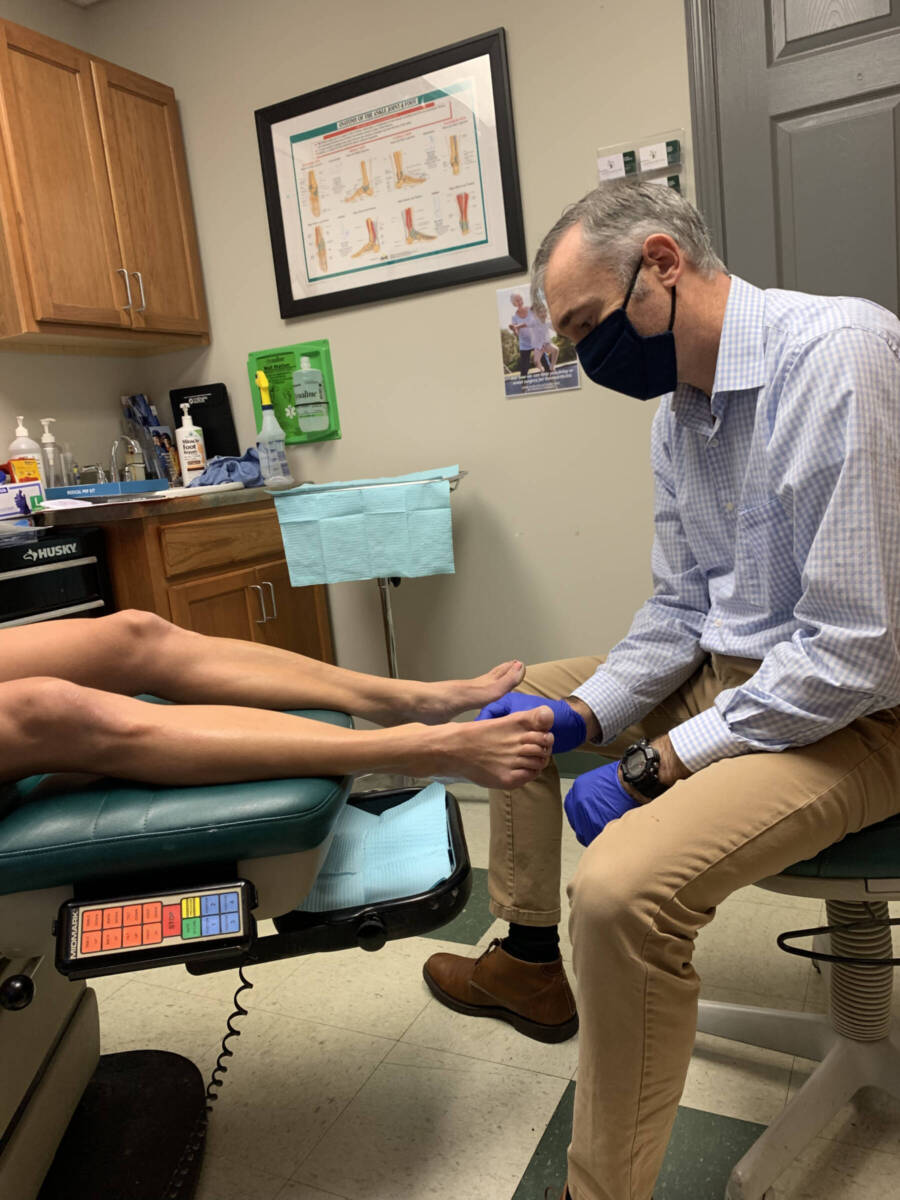
What are PRP injections and how do PRP injections work?
PRP stands for Platelet Rich Plasma, a treatment that uses your own blood cells to accelerate healing. How? Because plasma, a component of your blood, with extra platelets in it leverages the power of platelets, a type of blood cell, to trigger cell reproduction and tissue regeneration.
To create platelet-rich plasma, clinicians take a blood sample from the patient and place it into a device called a centrifuge that rapidly spins the sample, separating out the other components of the blood from the platelets and concentrating them within the plasma.
A clinician draws blood, spins it quickly in a centrifuge to separate the platelet-rich plasma, and then injects that PRP into the injured area using diagnostic ultrasound imaging to guide the needle to the right spot.
Watch a video of my PRP-injection.
Do PRP injections hurt?
Warning: without numbing medication, the PRP injection is painful. Like, worse than childbirth pain—particularly because the injured area is already incredibly sensitive. Even the lightest touch of my heel was painful. The PRP shot was much more painful than the cortisone shot.
Why do PRP injections hurt so much? I think it is because the needle goes deep into an already sensitive area and then the doctor moves it around to make sure the PRP reaches the entire injured area. It hurt and when I didn’t think it could hurt anymore, he’d move the needle and jab it further, and it hurt more. I needed crutches to walk out of the office.
For my second and third shots, I went in a half hour early so they could apply a topical numbing cream which helped a lot. I also had something to squeeze and a nurse tapped me to help distract me from the pain. All these measures made it more tolerable.
How much are PRP injections?
PRP injections cost about $250 per injection and are not covered by insurance. If you buy more than one, there is a chance your clinician will give you a discount. I was able to save about $10 per PRP injection when I bought a series of three.
Who can perform PRP injections?
A podiatrist performed my PRP injection. A sports physician or orthopedic may also perform a PRP injection for plantar fasciitis or a plantar fascia tear. I recommend searching “PRP injections near me.
How long does a plantar fascia tear take to heal?
After three PRP injections, it took a total of 4 months for my plantar fascia tear to heal. It took another six weeks to gradually ease back into running starting with running on the alter G treadmill then run/walk on the road.
My plantar fascia tear treatment plan:
Once I was diagnosed with a plantar fascia tear, I dramatically changed my treatment.
When I thought I had plantar fasciitis, I was doing a lot of manual therapies, icing and heating, stretching, and strengthening. When I learned I had a PF tear I did the following:
- I wore a boot for 6 weeks. For two weeks, I gradually weaned off wearing the boot.
- I stopped all manual therapies and stretching. I rested and let it heal.
- I did 1 PRP injection every month. After each injection, I would do total rest (no biking or weight lifting) for a total of 3 days.
- After two months, I was able to go from biking to weight-bearing on the elliptical. Then I was able to walk, run on the alter-g treadmill, and transition to run/walk 5 months after my PRP injection.
- Every week, minus 10 days after a PRP injection, I would see a physical therapist who performed manual therapies to allow the PRP injection to fully reach the entire injured area. This included massage, cupping, and western dry needling with electricity. He also gave me exercises to strengthen my foot and glute.
- My physical therapist also designed orthotics to address my foot biomechanics issues.
Do PRP injections heal plantar fasciitis and a torn PF?
Yes, I feel confident in my personal experience that PRP helped heal my plantar fasciitis and PF tear.
After each injection, the tear healed more. It’s also important to note that the healing rate accelerates EXPONENTIALLY after each PRP injection. Thus, I saw my tear shrink faster and my inflammation reduced more after each PRP shot.
- One month after my 1st PRP injection my tear went from 40 percent torn to 35 percent torn.
- One month after my 2nd PRP injection, my tear went from 35 percent torn to 20 percent torn.
- One month after my 3rd PRP injection, my tear went from 20 percent torn to less than 5 percent torn.
- Two months after my 3rd PRP injection and 5 months total, I had almost no heel pain.
It took a total of 6 months of rest, rehabilitation, and no running to heal my plantar fasciitis and PF tear.
How long do PRP injections last?
The PRP injection will last for 6 to 9 months, continuing the healing process long after the last shot.
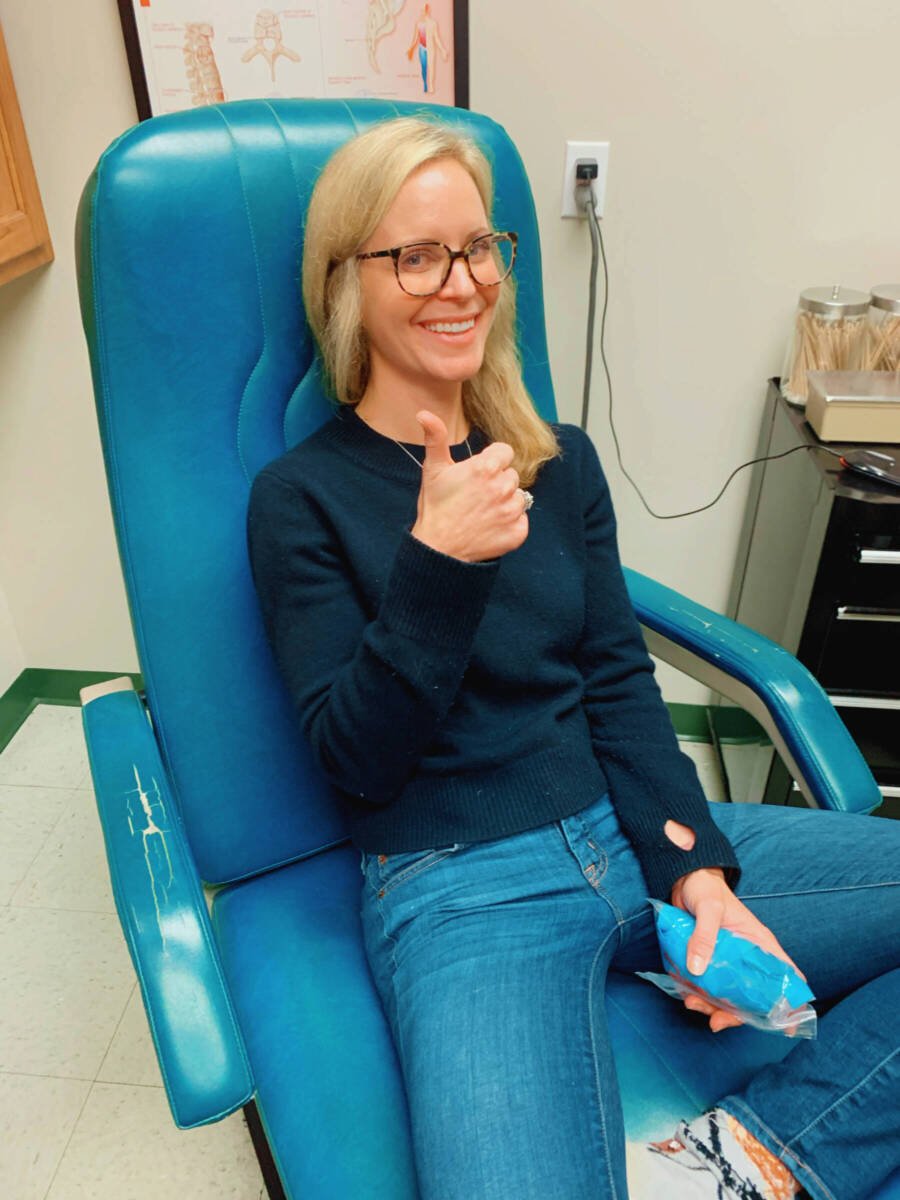
How long does it take for PRP injections to heal?
My PF was sore for several days up to a week after the PRP injection. It started to feel markedly better about two weeks after each PRP injection.
What caused my plantar fascia tear?
When you are dealing with a running injury, it’s paramount you identify the cause so you aren’t shadowboxing injuries.
My physical therapist was able to determine that I have the beginning of hammertoes in my right foot. This resulted in extra stretching of the plantar fascia when I run. It also caused extra torque on my leg while running which weakened my glute and led to a compensatory quadriceps injury.
The hammertoes also potentially led to my hamstring tear in 2019.
Thus, he prescribed custom orthotics and exercises to address biomechanical issues, muscle imbalances, and weaknesses.
5 Lessons from my Plantar Fascia Injury
Each running injury holds a host of lessons. I round-up several from my hamstring injury. My plantar fascia injury also taught me many things.
Get imaging.
Instead of wasting my time treating the wrong injury (plantar fasciitis), if I had my injury imaged, I could have started the PRP injections and healing process two months sooner. If you don’t see any improvement after a couple of weeks, get your injury imaged. Also, it may be time to try a new treatment.
Find a medical professional you trust.
I had so many medical opinions and personal experiences thrown my way on how to treat my injury. Finding a medical professional who knows me, runners, and has my best interest at heart (not dollar signs) was crucial. Ask around for doctor and physical therapy recommendations from people you trust.
Throw out timelines.
Don’t try to stick to a healing timeline. Try to focus on the day-to-day. Your number one goal is healing. Running and races will always be there.
Listen to others’ advice & experiences carefully.
Try not to let other people’s injury stories get you down. I remember the day I decided to try PRP injections, a lady in a running store felt the need to start chatting with me about my boot, her plantar fascia tear, and how PRP injections didn’t help her.
Their stories are not your stories. There are too many variables that it is never apples to apples. Plus, you never know how committed to recovery these people are.
Get more than one injection.
I’ve had a lot of people reach out to me, saying PRP injections did not work for the plantar fascia tear and plantar fasciitis. Then I learned they only got one. You likely need a series of PRP injections (an average of 3 PRP shots) for the PF tear to heal.
Dealing with an injury is mentally exhausting. It takes endurance to find the problem, cause, and solution. I hope sharing my experience will help you find what is best for you. If you have lessons you learned in your running injury journey, please share in the comments!


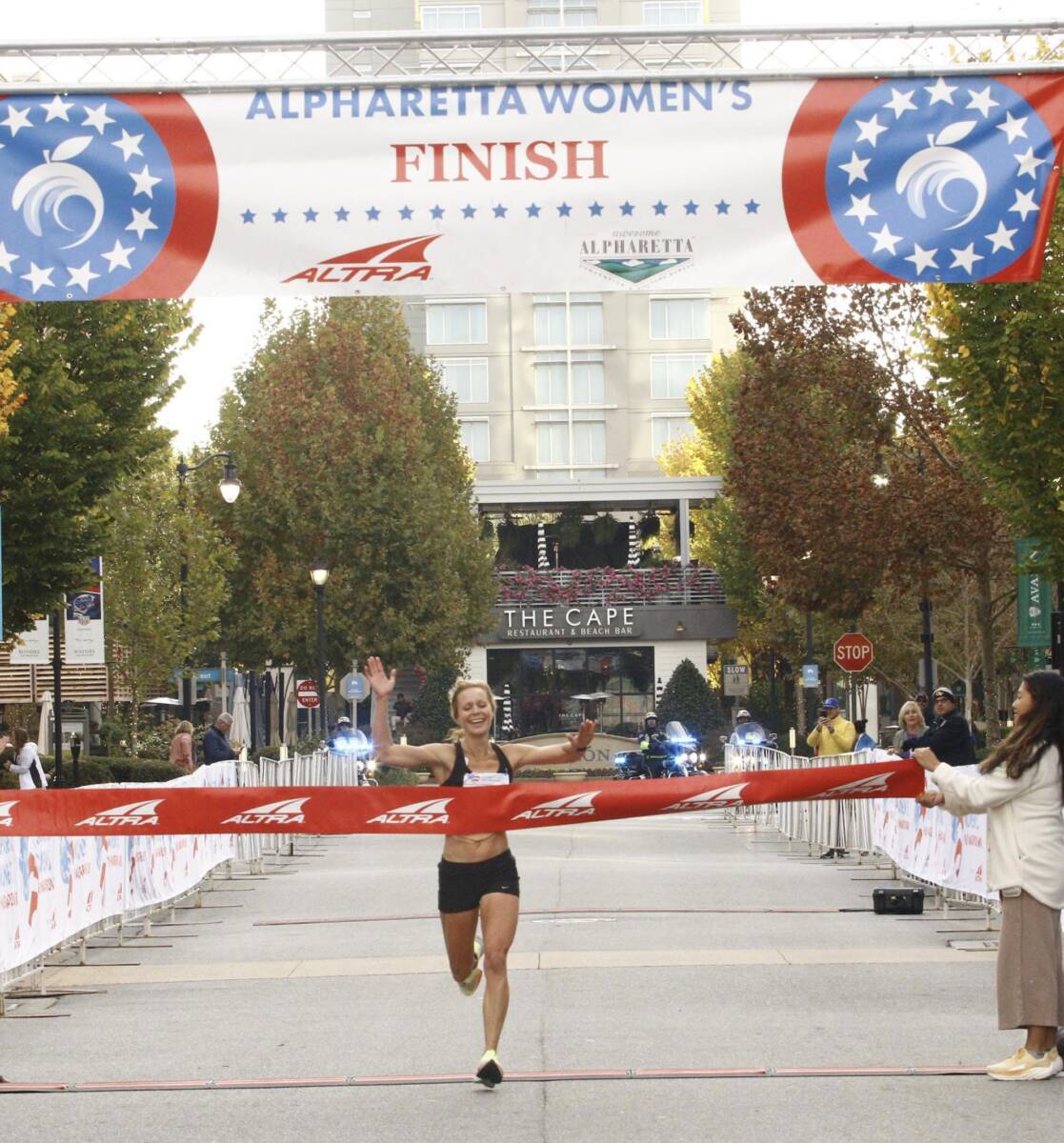
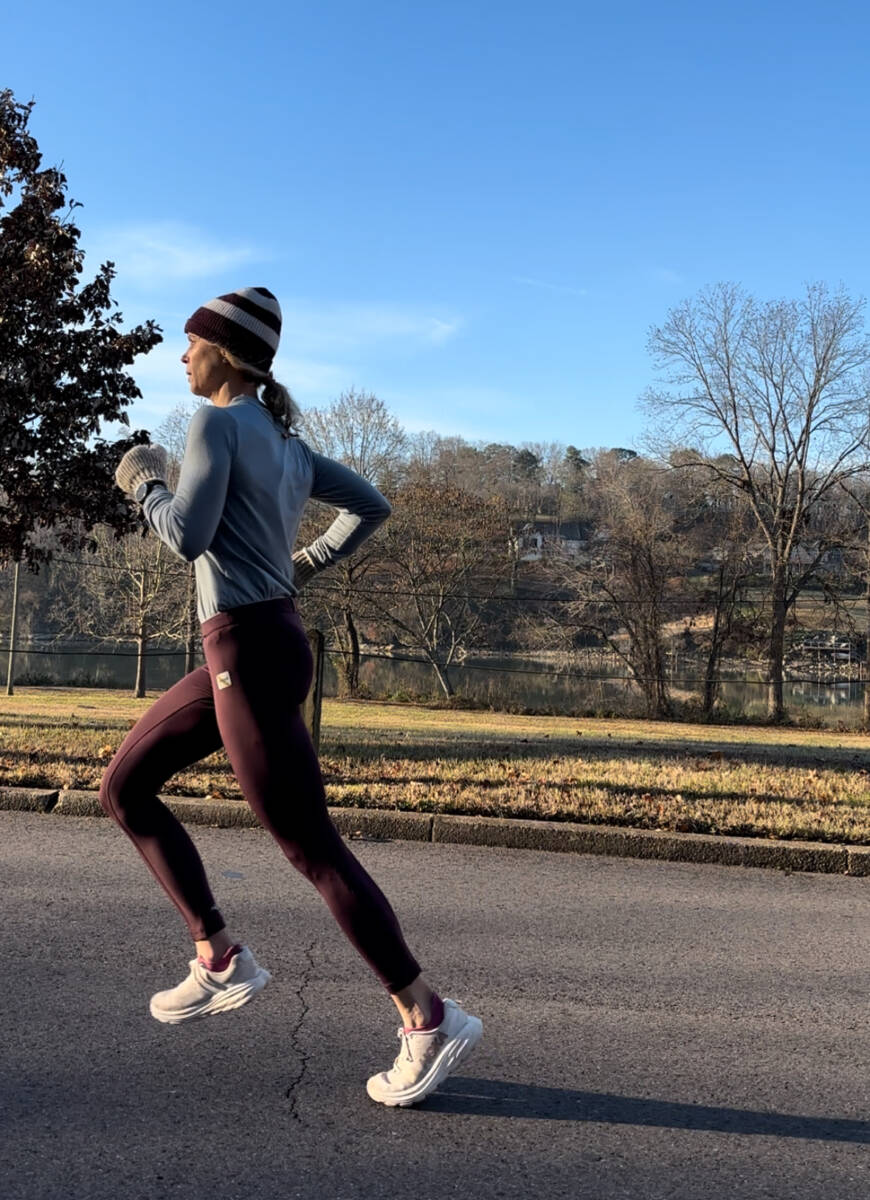
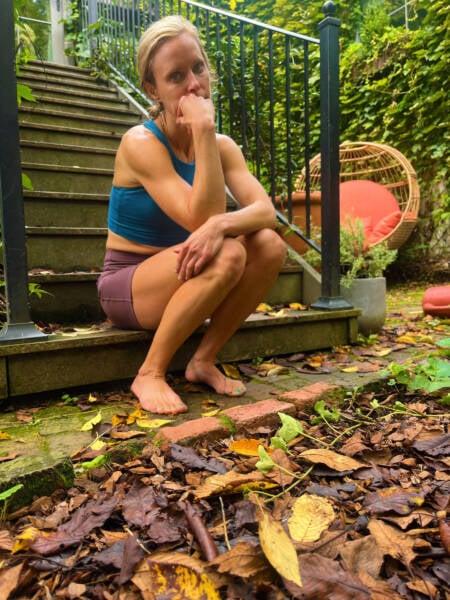
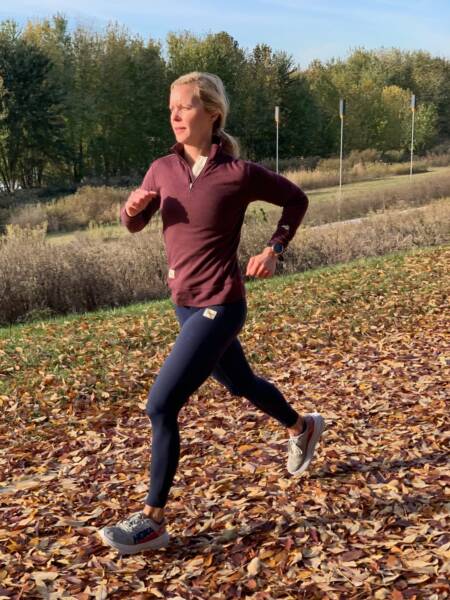
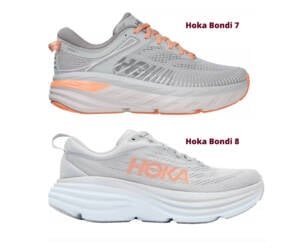
Hi There, Did you wear a boot after each PRP injection?
I did not—just for a total of 6 weeks so not for the last shot
Hi,
Thank you for sharing. I think I have a tear plantar fasciitis as well. For you recovery:
1-When you say you were in a boot for 6 weeks is it after each PRP inj or a total of 6 weeks meaning each PRP inj two weeks in boots
2-Were you using crutches and until when or walking with boot is fine but limiting walking
3- were you taking off your boot to do ankle exercise and stationnary bike after two weeks exercise started only after all 3 injections
4- when did you started the stretching exercise
Hey Carol! I’m so sorry! I wore a boot for a total of 6 weeks so not for the last shot.
Got a shot every month. So over 12 weeks. No crutches. I actually didn’t stretch it. That made it worse. I did toe yoga
Do you do PT before PRP already knowing it was a tear
Let me try this again … I was just diagnosed with a Tear also …and I am in a boot …. but the Doctor is suggesting I do PT first before trying PRP …. is this a money making thing… OR can I just get the PRP without PT
HELP !?
Once I knew it was a tear I got the PRP. The PT I did prior to knowing it was a tear made it worse, I think😱. I hope you heal quickly!!
Hello! Your story sounds so similar to my own and I’m glad I found it. I was likely running on a torn PF for a while but was sure it was Plantar Fasciitis. Currently doing my stint in a boot and figuring out my next steps (beyond cancelling my summer races). How often were you reimaging with your doctor to track your recovery?
Hi Melanie! I’m so sorry! It was imaged every time I got a PRP injection (so every month) plus one month after the final one. It was all but healed!
THANK YOU for publishing your story. I ruptured my right plantar fascia about five years ago following two steroid injections (no doubt the multiple injections weakened the tendon and contributed to the rupture). When I developed pf in my left heel a few months ago I vowed to do everything to avoid the injections and get imaging as soon as possible. MRI confirmed a partial tear.
I am headed for my first PRP treatment this week, and you give me great hope. While I was sad to read I may need to take more time off from running than anticipated, I am confident this plan is optimal and ultimately will get me back to running.
The other heartening piece of information is that you rode a bike for the duration of your injury (other than about three days post-prp). I was concerned I would need to stop using the bike. It has been challenging going from an active lifestyle (tennis and strength training in addition to running) to something much more sedentary. Thanks again for all the information you provided!
I am so sorry you are going through this again! But I’m glad you’re on the right path. A friend of mine only needed one injection to heal so you may be back sooner than me. I think it depends on the size of the tear. Best of luck to you. Please let me know if you have any questions or need to vent in any way:)
Thank you SO MUCH for this wonderfully informative and insightful article, well written and organised. It is excellent! I also experienced a worsening of a plantar injury by going to a (otherwise wonderful) PT and having been given stretching-every-hour instructions. Things only got worse. When I went to the doctor he said I had a tear. Just had PRP, after reading your article, 2 weeks ago. I did not realise the healing would take so long. It feels lots better but I think I’ll need another one or two like you. My problem is I have to stretch my calf because it is short and tight and makes it worse if I don’t stretch it. What a complication! We all have our own particular complications! It certainly is difficult if you are used to being very active. At least I can swim everyday, I would go stir crazy if I couldn’t. Again, thanks so very much for your effort in putting this together, you gave me real hope.
Vanessa, I am so glad sharing my experience may be helpful to you! I’m sorry you’re dealing with this too but I’m so hopeful the PRP will help you too!
Hi
I can’t believe I’ve just come across this article while googling about my pain which has never really gone away after receiving my PRP injection in July 2021…
I suffered for 18 months, same as yourself, with plantar fasciitis and Achilles tendinitis. I tried all methods of PT and also shock therapy for months, finally I had an MRI. This revealed the 2cm tear in my plantar fascia. My consultant offered the PRP injection (he only mentioned the one) which I received under sedation and rested for 2 months. It’s never really healed properly, I’ve always had a bit of a nagging pain since, but not as bad as it was.
After reading this, I’m now wondering if the tear is still there. I assumed it was just plantar fasciitis and I’d have to get used to the pain for the rest of my life! Don’t get me wrong, it’s not excruciating pain like it was but it’s still there, a numb pain, sometimes throbbing and sometimes even wakes me up at night.
So can I ask what steps you would take now? Back to PT to see if that helps or back to my consultant for a new MRI scan? I was very lucky to have my insurance cover, even for my PRP injection (I’m in the UK) as I had suffered for so long and I guess it shouldn’t be an issue again.
Hi Ceri! It could still be torn or some lingering inflammation that another PRP injection or intervention could help with. If you are able to get an MRI or ultrasound, I would!
Hi
I have a 20% tear in my plantar fascia and similar story was mis diagnosed as just pf 6 months ago until a scan confirmed the tear. I had my PRP shot 2 weeks ago and am in a boot at all times . I rested as much as I could for first week but now doing normal daily duties . My worry is it is still sore in my heel by end of day . Is this to be expected at this stage ? Im worries it’s not worked . I have a scan at 4 weeks
Hi! Totally expected. Because it’s in your foot, the healing rate is slow but it gets progressively faster over time after each shot. It took me 3 shots over 3 months plus an extra month of rest after before it really felt better. And I wasn’t totally pain free until maybe 3-4 months after. Now I am.
Thank you so much for sharing. I having been struggling with chronic PF for a year and i get calf pain as well. I also have peroneal tendonitis. I have exercises to do but it doesn’t seem to make a difference. Its painful to walk, especially my heel as i have spurs as well. I also get throbbing and sharp pain in my feet and ankle. I have been a runner all my life and miss it so much. I have been researching PRP injections and it scares me that it is so painful! Did the numbing cream actually help that much? I have had an ultrasound not an MRI…did you find the tear through the MRI or just the ultrasound? My problem is trying to stop activity and wear a boot as I am driving my kids around so much and it’s my right foot/ankle. My specialist also suggested a plantar fascia release…which I’m not too keen on? Any advice would be appreciated. Kerri
Hey Kerri! I am so sorry! That sounds so painful. The boot was a nuisance but if I was driving and not walking around, I’d just wear my oofos. It definitely helped to boot it. The cream did help with the pain & an ultrasound is what saw the tear. They would ultrasound with the PRP too to make sure they got it in the right spot & track the healing. I don’t know what a PF release is? Surgery?? Best of luck to you!
You’ve given me a lot of info to ponder as I deal with my PF and months of PT under my belt. Can you clarify what kind of boot you used? Is it a standard immobilization boot or a PF splint type boot, keeping the foot at a tight angle at the ankle? And if immobilization boot, is it the long type (up to your knee) or the shorter type? Thanks!!!
Hi Whitney,
A guy here. Like others here I stumbled across your article while researching PRP for plantar fasciitis. A little background: I have extensive tendon / ligament damage in my forearms and right leg resulting from the antibiotic Levofloxacin prescribed last December (the docs didn’t bother to warn me about this despite the drug’s notoriety; the FDA warns that the danger to tendons is so great that it should be reserved for infections like anthrax and–I kid you not–the black death). This drug can continue to cause collagen proteins to break down 6 months or more after you stop taking it. Because of this, From Jan to April I ran only intermittently & very short distances. PF pain developed in April, so I stopped running completely for 4 months. I’ve been getting physical therapy and began gently walk-running 3 weeks ago (oddly, it hurts a little to walk, but not to run). Pain isn’t getting worse but is very steady. The healing more or less plateaued a couple of months ago. My question is, do you have any info suggesting the toxic effects of Levofloxacin could inhibit the healing effects of PRP? Apologies for long-windedness. Thanks for listening–Mike
Hi Mike, I’m sorry I do not. I do know antibiotics can have a detrimental effect on soft tissues but don’t know the degree. Have you talked to you health care provider?? I am so sorry you’re still in pain!
I have had PF on and off for five years. I was always a runner and fast pace Walker.
As time would go on each bout I went to the Orthopedic and was given exercises and steroid injects along with pt, night braces and pieces to put in my shoes and sneakers.
I had a total left knee replacement last august.
I slowly over 9 months was able to get back some good walking face paced and treadmill and 20,000 plus steps. As time continues on the pain was so severe. I got breaks, and tears and the Charlie horses are the worst.
I tried every product on the market. Exercises I could find and try pool, land, machine & pt.
I have been scheduled for:
Left Gastronemius recession & Left Iliac Crest Bone Marrow Aspiration Concentration & Injection into The Left Plantar Fascia.
Now have just as many problems with my right foot
I’m scared, never been off my feet.
That sound awful, Robin! I hope the procedure gives you relief.
Hello! Thank you so much for your article, it has been so guiding as I am on my own journey to heal my torn PF that I’ve been mistreating for 4 months as plantar fasciitis. I have been receiving treatment between USA and Europe, and it’s been interesting seeing what treatment option suggestions have been (USA doctors have all pushed me for surgery- tenjet) while European doctors have all said PRP (and cursed american doctors for always rushing to surgery!) i think I am going to more forward with 3 PRP shots and put myself in a boot and really try my best to heal from inside out- but curious as to why you just wore boot and didn’t do no weight bearing in beginning? I live in paris mostly so crutches/ scooter doesn’t seem practical, but I want to do best thing for myself to actually heal, because being told I will “never run again” Is too hard to bear. Thank you!
Ahh you will run again!!!! I am hopeful PRP will help you! I went into a boot because it needed to calm down. I felt pain 24/7 and a boot helped the inflammation go down, pain subside and expedited healing. When I would walk in oofos or running shoes it would feel like it was ripping all over again. A boot really helped!
thank you for this!!! and you didn’t consider crutches? did you do no weight bearing immediately after PRP?
They said I didn’t need them, though I did need them immediately after my first PRP shot to get to the car!
Whitney,
I emailed the podiatrist yesterday. He does not believe the levofloxacin will interfere with the PRP. Another concern is that I’ll have to return to work the day after treatment. I’m on my feet a solid 8 hours on hard concrete floors lugging around 20, 30, 40 pound boxes. Not exactly a recipe for healing damaged tendons and ligaments.
Meanwhile, I want to get the word out to all of your readers that if you’re prescribed any antibiotic in the fluoroquinolone family, ask for an alternative (there almost always is one). And ask lots of questions, because likely the care providers won’t provide the info without prompting. I have learned that many docs give little thought to prescribing these drugs, despite the well-known dangers. I trusted medical professionals and was left totally vulnerable, resulting in my life being turned upside down with no clear idea if I’ll ever fully heal. I do not want this to happen to anyone else.
Whitney, thank you so much for providing this forum. I learned so much from your account.
Mike
Mike, thanks for sharing this warning. I’ll investigate writing about it. Best of luck to you!!
I have chronic PF – 3 years last month. Yesterday I had my 7th MRI done at the Mayo Clinic in Rochester. Apparently the plantar fascia is thickened to nearly 7mm. The podiatrist called one of their sports medicine docs and he said PRP would be an option. Other than that it may be a condition I have to live with forever. I’m scheduled for a consult in October. Glad to have come across your story as it gives me some hope and also some good questions to ask.
7mm? I can only imagine the pain you are in! I know PRP has helped others too. The key is getting multiple injections. Good luck and reach out with any questions!
Whitney,
Many thanks for sharing your experience with PRP injections and a plantar facial tear. I am suffering from a tear confirmed by an MRI and have an appointment for a consultation for a PRP injection this month. I have had cortisone injections, currently attend PT, had a cast on my foot for 3 weeks, ice, massage, anti-inflammatory medicines, wear only HOKA and Oofos at this time, and work in education so I am on my feet all day, every day. I have tried everything and my doctor said the next step would be surgery however my husband and I are trying the PRP injections first. After reading your article I feel better equipped to speak to my provider at my upcoming appointment and am hopeful that I get the same results as you. Your story reassures me that I can get back to being myself again. When your foot/feet hurt, everything hurts. Your article and detailed information are invaluable, thank you so much! Allison
We have such similarities, Allison! Best of luck to you and please reach out with any questions!
I’ve read this post multiple times as well as the comments. So helpful—thank you! I have been suffering with PF since at least early January, but probably longer as I was ignoring it and continuing to run (was supposed to run the NYC marathon but had to defer). By February I could not run at all. I was referred to PT, who is an ultra runner, who did all of the manual therapies. Long story short I’ve done many many (every?) treatment. I got an MRI fairly early on after wearing a boot for four weeks and having no relief. After the MRI, they put me back in the boot 4 more weeks as there was a stress reaction on the top of my foot (probably from trying to get back to running while avoiding my heel). But the main pain has always been my PF. No tear (I’ve had both mri and ultrasound). So three weeks ago today I had PRP. I have not felt any relief from it yet. My question is at what point and how do I decide to do a second injection. It costs $600 per injection and I was hoping that the relief would be more obvious at this point. I would be happy to schedule a second one, but I don’t want to spend even more money if it’s not helping, which it doesn’t seem like it is yet. Too soon to tell? Thoughts? I’ve also seen a surgeon about a PF release but am avoiding surgery like the plague.
Ugh, Jennifer. I am so sorry. I do think it’s too soon to tell. It was not until weeks after my second injection I noticed a marked difference when weaning out of the boot. They can do an ultrasound to see if thickness/inflammation has decreased to see if it’s working. That can help you decide whether to spring for another one
That’s an excellent thought-I’ll schedule that next week. Thank you!
Thanks so much for sharing your experience. My MRI diagnosed severe thickening of the medial band of the plantar fascia with “low-grade” partial-thickness tear.
I am trying to measure the seriousness of the scenario as it does not provide a percentage tear level as others received. Can you kindly share how this diagnosis compare to your situation?
My New York Marathon training is over and I hope I can be ready for London 2023
Is it possible the reading just didn’t include a percentage?
Whitney, thanks so much – as a follow up I found out my tear is “little less than 40%”.
1- Can you kindly advise what type of exercise/ activity did you do after the PRP procedure in order to remain active? if anything.
2- How did you monitor tear improvement evolution? Ultrasound or MRI?
3- What did you do to expedite band healing before/ after the PRP? I assume stretching/ massage gun is not advisable? I am wondering if I should apply Voltaren and/ or Ice/ electric stimulation? or just total rest?
4- For how long did u wear the CAM boot after PRP procedure?
Thanks again and best of luck!!!
Hi Andy! Great! 1. I biked 2. Ultrasound with each subsequent Injection 3. Went to PT who did electric needling, massage and cupping plus toe yoga 4. Boot for 6 weeks then weaned off. Hope that helps!
Did you take any supplements to help the ligament heal?
I did not. Just focused on eating real food
Thank you, your PRP history is very informative.
This is very helpful information. I am 5 months out from a partial tear that I mistakenly thought was traditional plantar fascitis. I’ve been in a boot for a month and have been attending physical therapy, and I would say i’m about 60-70% better. I have an appointment with my Orthopedist in a week and quite frankly, the thought of an injection into the bottom of my foot is really unsettling. If we discuss PRP and he recommends it, is there anything I can do to lessen the pain before the injection other than the cream? Ice? Is there a possibility of them doing lidocaine cream and lidocaine injections before the PRP injection? Thanks! Eric.
The first injection they just did a numbing spray before that didn’t help too much. The next two, I came 30 minutes early and they applied a more effective numbing cream that needed to penetrate to work. They also gave me a ball to squeeze and a nurse tapped me. This all helped a ton! It also became less painful as my foot healed. I would also about the cream because it does hurt a lot in an area that can’t withstand the lightest touch. I can ask what cream it was…stay tuned….Best of luck to you!!
Thank you very much. If you are able to find out the name, I would really appreciate it. I’ll take any help I can with reducing the discomfort.
Hey Eric! The product is Lidocaine 2.5% and Prilocaine 2.5% cream
Thank you Whitney! Will post an update after the next visit.
Hi there! I want to thank you so much for your detailed account of what you went through — it has been very helpful for me as I navigate healing my own foot issues. I began having intense heel pain after wearing a terrible pair of cheap black flats in November which I ignored thinking it would go away while also trying to get back into running (and continuing to exercise and hike intensely). I finally saw a podiatrist in early March who said it was “plantar fasciitis” and ‘prescribed’ the typical stretching, icing, and OTC inserts. A big clue for me should have been that within 3 weeks I was in worse pain than I had started in, barely able to walk around without limping the pain was so excruciating.
Sadly it wasn’t until this past October (nearly 6 months later) that I was able to get an MRI which revealed 1.2 cm of ‘interstitial tearing’ in the plantar fascia. While the first podiatrist did an x-ray initially to confirm nothing was broken in my heel, if I had been able to get diagnostic imaging at the beginning of April, I would have spared myself many months of agony trying to fix what I thought was “plantar fasciitis” through all the standard means!
I got frustrated with the 1st podiatrist when she wanted to put me in a boot (I was annoyed that the pain worsened after following her instructions to a tee; had she actually done some imaging to reveal a tear, I would have probably been a lot more willing to wear one then!) and saw a second podiatrist a few weeks later who taped my foot and made custom orthotics. Another clue for me should have been that the taping did not really solve the issue; it seemed to actually aggravate the issue, especially tendons in my ankle and the back of the bottom of my heel. The custom orthotics also took *forever* and within 3 weeks of wearing them (now late May), I didn’t seem to be improving at all. That podiatrist finally relented and said they had maybe been mis-cast and had new ones produced which didn’t arrive until mid-July.
At that point I had done some research and sought shockwave therapy at a chiropractor’s office. I do think that the shockwave reduced the pain by about 50% (I had 2 treatments in late June, 2 in early July, and 2 in August), but by September, it just seemed like it was lingering and not getting better so I told my regular doctor all about it and he referred me to a new podiatrist who ordered the MRI and then put me in a boot for 6 weeks.
I did a PRP injection 2 weeks into wearing the boot and am thinking I will do a second injection in a couple weeks (which will be a month after injection #1). I can still feel the sore spot on my foot ‘tingling’ occasionally (which I think either means I’ve managed to aggravate it somehow OR is a sign it may be healing?).
I have a few questions for you about your healing process which if you have time to answer, I would greatly appreciate!
* do you/did you ever get flare-ups of the plantar fascia? What do you do if you feel pain, if you do?
* What shoes do you wear outside of exercise? Do you feel like you have to wear sneakers exclusively or are you able to wear other shoes?
* How did you increase mileage/activity? How quickly? I’m hoping I can at least get back to walking more at some point soon.
* Were you completely immobilized in the walking boot, or partially weight bearing? The podiatrist wanted me to get a knee scooter but living in San Francisco on a hill and in a building with many stairs, it would have been literally impossible. I have been using a cane to try to reduce weight bearing and keep my steps low everyday.
Thanks again so much for sharing your saga, it has given me a lot of hope as I sit here trying to heal my foot!
Oh wow, I’m so happy to have come across this article and thread. I had my first PRP injection today after over a year of PF pain confirmed by an MRI. I’m not a runner, I’m a walker. And I’m really willing to go through just about any pain to get back to walking and then hopefully hiking again.
Some things I learned about PF. My sports med specialist says that 60% of his patients are women going through perimenopause. If your hormones are down, this can lead to PF and general muscle and tissue soreness and degeneration. So I’ve upped my hormone replacement therapy and you may also want to get your hormones checked (even guys start to lose testosterone and this can effect you).
For me the PRP injection was about the same amount of pain as shock therapy. My doc told me to bring an ice pack. He gave me a local anaesthetic and then iced the site for 10 mins before giving me the PrP injection and it was fine. Today though, after the anaesthetic wore off, I’ve been really sore and hobbling about. Can’t really walk.
I’m hoping I just need the one PRP injection. In Australia the injections are not covered by govt so I paid $1800 for mine today (about $1400 USD). Eeek. Will update on progress in a few weeks!
Hello. Enjoyed the article.
I’m a firefighter and this spring had a fall at work that resulted in a 90% rupture. I’ve had 1 prp injection on November 29 but it looks like that’s where it will stop unless I can find proof that 3 injections will be better. I have forwarded your article to my doctor but I’m hoping you can help me with more information that I can forward to my doctor. My toes have started to curl and it feels like I have a golf ball in my shoe at all times. It’s been a long road and I sure hope this doesn’t end my career.
Is there anyway you can provide me with more information I can give my doctor.
I am a fire fighter and this spring I fell at work and 90% tore my plantar fascia. I’ve had one PRP injection but after reading your article, I would like my doctor to give me two additional injections. He said there is very little evidence to support additional injections, but if I could provide him with some evidence, he would be open to it. Is there anyway you can help because I’m worried this could end my career.
Sorry this message back is so late, Jeff, I didn’t realize I wasn’t getting notifications for these comments until today! I hope you got the help you needed!
Great post and comments, super helpful as I was recently diagnosed with a partial tear. I have been in a boot for a week so far and debating PRP injections. Doc says may help but not pushing it hard at all and reading mixed reviews. Just curious, you seem to think that PRP was important to your recovery, any reason you think you wouldn’t have had the same results with just a boot?
Hi Pat! I have had PRP now for two different injuries (this fall with a labral tear) and it healed both injuries. Both the PF and labrum don’t get much blood flow so healing rate is very very slow and minimal. That is why I believe it was the main reason for me healing. I hope you are getting better! Sorry this message back is so late, I didn’t realize I wasn’t getting notifications for these comments until today!